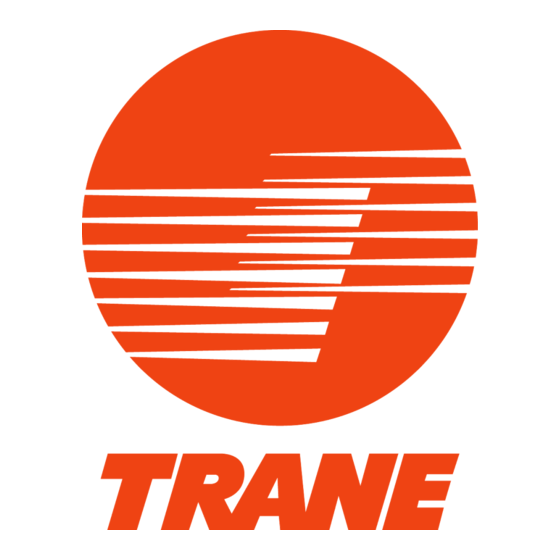
Table of Contents
Advertisement
Quick Links
- 1 Table of Contents
- 2 Section 2. Unit Location Considerations
- 3 Section 5. Refrigerant Line Considerations
- 4 Section 11. Electrical - Low Voltage
- 5 Section 12. Electrical - High Voltage
- 6 Section 14. System Charge Adjustment
- 7 Section 15. Checkout Procedures and Troubleshooting
- 8 Troubleshooting
- Download this manual
ALL phases of this installation must comply with NATIONAL, STATE AND LOCAL CODES
IMPORTANT - This Document is customer property and is to remain with this unit. Please return to service informa-
tion pack upon completion of work.
These instructions do not cover all variations in systems or provide for every possible contingency to be met in connection with
the installation. Should further information be desired or should particular problems arise which are not covered sufficiently for the
purchaser's purposes, the matter should be referred to your installing dealer or local distributor.
Note: The manufacturer recommends installing only approved matched indoor and outdoor systems. All of the manufacture's split
systems are A.H.R.I. rated only with TXV/EEV indoor systems. Some of the benefits of installing approved matched indoor and
outdoor split systems are maximum efficiency, optimum performance and the best overall system reliability.
Table of Contents
Section 1. Safety ..................................................................................... 2
Section 2. Unit Location Considerations.............................................. 3
Section 3. Unit Preparation .................................................................... 5
Section 4. Setting the Unit ..................................................................... 5
Section 5. Refrigerant Line Considerations ......................................... 6
Section 6. Refrigerant Line Routing ..................................................... 7
Section 7. Refrigerant Line Brazing ...................................................... 8
Section 8. Refrigerant Line Leak Check ............................................. 10
Section 9. Evacuation ........................................................................... 11
Section 10. Service Valves ................................................................... 11
Section 11. Electrical - Low Voltage .................................................... 13
Section 12. Electrical - High Voltage ................................................... 16
Section 13. Start Up .............................................................................. 17
Section 14. System Charge Adjustment ............................................. 18
Section 15. Checkout Procedures and Troubleshooting ................... 22
Installer's Guide
Condensing Units
4TTX5018A-060A, 049E
18-AC74D1-4
Advertisement
Table of Contents
Troubleshooting

Summarization of Contents
Section 1. Safety
General Safety Warnings and Precautions
Covers essential safety guidelines for handling electrical components, refrigerants, and unit operation.
Section 2. Unit Location Considerations
Unit Dimensions and Weight
Details the physical specifications and weight of condensing units for installation planning.
Refrigerant Piping Limits
Specifies maximum lengths and vertical changes for refrigerant lines connecting indoor and outdoor units.
Suggested Locations for Best Reliability
Guidance on optimal placement of the outdoor unit for airflow, noise, and protection.
Coastal Installation Considerations
Requirements for units installed in coastal environments to prevent corrosion.
Section 3. Unit Preparation
Unit Preparation Steps
Steps for checking the unit for damage and preparing it for installation.
Section 4. Setting the Unit
Pad Installation Requirements
Considerations for properly installing the unit on a support pad or slab.
Section 5. Refrigerant Line Considerations
Refrigerant Line and Valve Connection Sizes
Table detailing correct line sizes and service valve connection sizes for different models.
Factory Charge and Line Length Adjustments
Information on factory charge and when adjustments are needed based on line length.
Required Refrigerant Line Length and Lift Measurement
Instructions to determine and record total line length and vertical change for system setup.
Refrigerant Line Insulation Guidelines
Guidance on insulating the vapor line and preventing contact between lines.
Reuse of Existing Refrigerant Lines
Precautions and checks required when retrofitting with existing refrigerant lines.
Section 6. Refrigerant Line Routing
Refrigerant Line Routing Precautions
Guidelines to prevent noise transmission and ensure proper routing, isolation, and turns.
Section 7. Refrigerant Line Brazing
Refrigerant Line Brazing Procedure
Step-by-step instructions for preparing and brazing refrigerant lines to service valves.
Brazing Precautions and Nitrogen Purge
Details on protecting components from heat during brazing and using dry nitrogen purge.
Section 8. Refrigerant Line Leak Check
Refrigerant Line Leak Check Procedure
Procedure for pressurizing system with nitrogen and checking for leaks using soapy solution.
Section 9. Evacuation
Evacuation of Refrigerant Lines and Coil
Steps for achieving and verifying proper vacuum levels using a micron gauge.
Section 10. Service Valves
Opening the Gas Service Valve
Instructions for correctly opening the gas service valve after evacuation.
Opening the Liquid Service Valve
Detailed procedure and safety warning for opening the liquid line service valve.
Section 11. Electrical - Low Voltage
Low Voltage Maximum Wire Length
Table specifying maximum allowed wire lengths for low voltage connections based on wire gauge.
Low Voltage Hook-up Diagrams
Schematics illustrating low voltage wiring connections for air handler and furnace configurations.
Communicating and Specific Air Handler Hook-ups
Wiring diagrams for communicating systems and specific air handler models (AM7, GAM5).
Section 12. Electrical - High Voltage
High Voltage Power Supply Requirements
Guidelines for connecting high voltage power supply, matching nameplate, and local codes.
High Voltage Disconnect Switch and Grounding
Requirements for installing a disconnect switch and proper grounding of the unit.
Section 13. Start Up
System Start Up Procedure
Step-by-step guide for powering up the system and initial thermostat settings.
Section 14. System Charge Adjustment
Temperature Measurements for Charging
Instructions for measuring outdoor and indoor temperatures relevant to system charging.
Subcooling Charging in Cooling Mode
Detailed procedure for charging system using subcooling based on line length.
Subcooling Charging Charts and Corrections
Charts to determine subcooling corrections based on refrigerant line length and lift.
Liquid Line Temp & Pressure Measurement
Steps to measure liquid line temperature and pressure at the service valve for charging.
R-410A Refrigerant Charging Chart
Table correlating subcooling, liquid line temperature, and liquid gauge pressure for R-410A.
Adjust Refrigerant Level and Stabilize System
Procedure for adding/recovering refrigerant to match chart values and stabilizing the system.
Verify Typical System Performance
Guidance on verifying system performance against reference curves.
Section 15. Checkout Procedures and Troubleshooting
Operational and Checkout Procedures
Final inspection checklist and operational checks to ensure proper system function.
Troubleshooting System Faults
Fault diagnostic chart identifying potential causes for system issues and checks.













Need help?
Do you have a question about the 4TTX5048A1000A and is the answer not in the manual?
Questions and answers